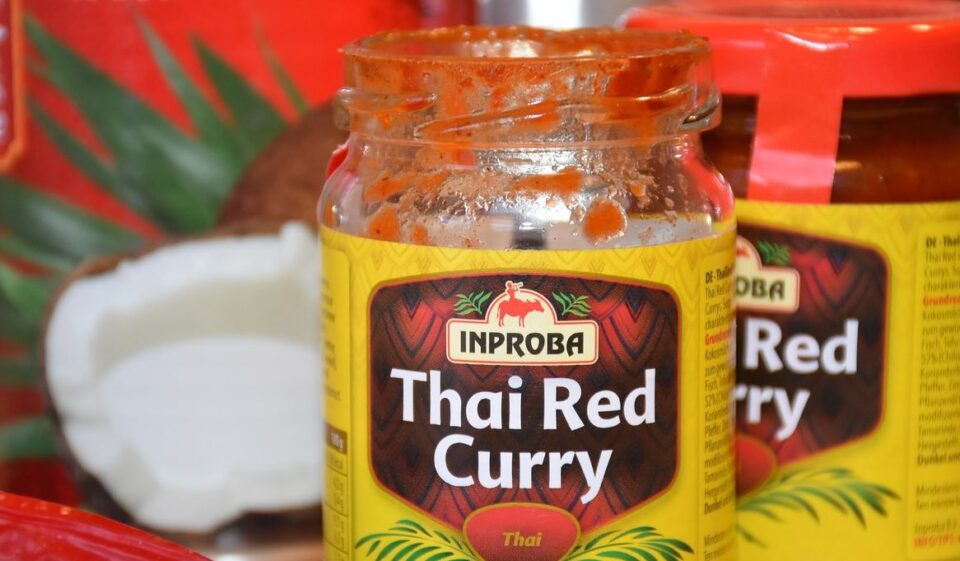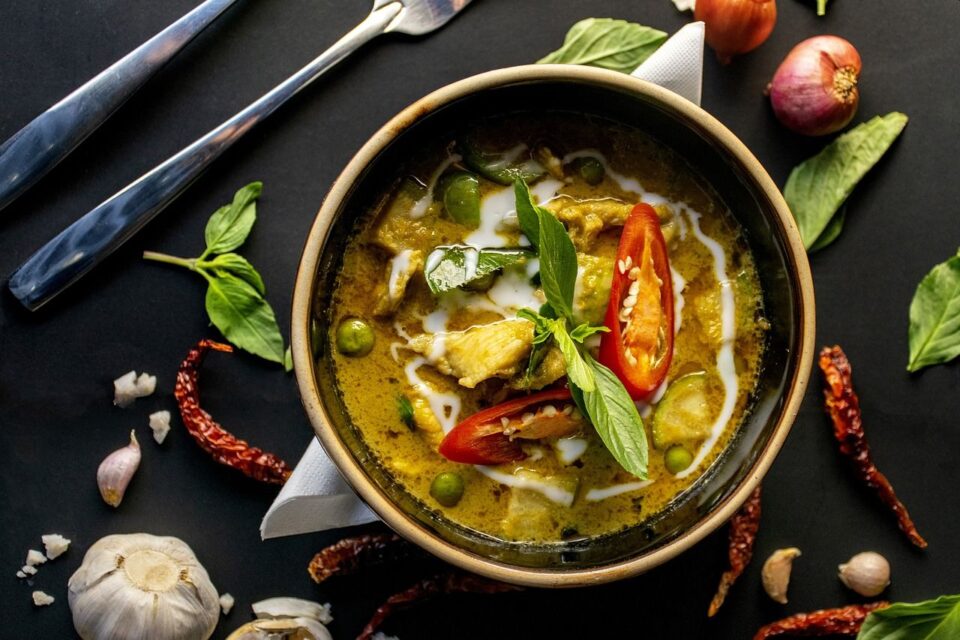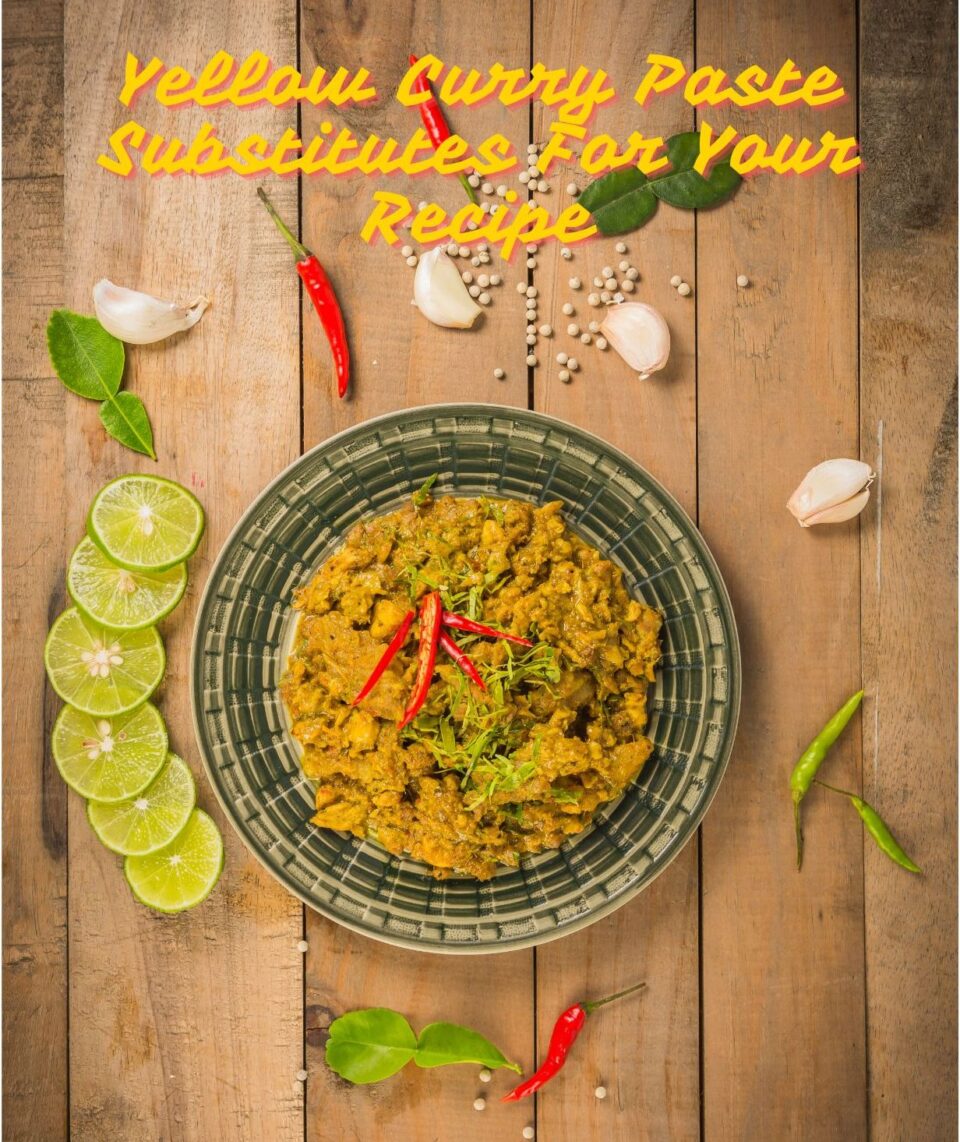What are your best options if you need yellow curry paste substitutes for your recipe? This curry paste forms an important part of several Thai recipes. So, your choice of substitute should be well thought out. Of course, the substitution can depend on your recipe as well as the availability of the chosen replacement.
Generally though, the best yellow curry paste substitutes are Indian curry powder, red curry paste, green curry paste, and Laksa. In case you were dependent on store-bought curry paste, it might be worthwhile to make the yellow curry paste at home.
That said, let’s get into substitution details and other related aspects.
Table of Contents
Top Yellow Curry Paste Substitution Options
1. Curry Powder
Curry powder is intended as a quick way to make Indian curry. It is rich in herbs and flavors, but isn’t too hot and spicy. Additionally, there’s quite a bit of turmeric in the curry powder, which gives it a nice yellow color. All these qualities make curry powder a good substitute for yellow curry paste.
While Indian and Thai yellow curry are not interchangeable, the curry powder works as a substitute because it’s simply a mix of spices. It helps that the yellow curry paste takes some inspiration from the Indian yellow curry, so this approach is not a radically different idea.
Interestingly, curry powder is not used in conventional Indian cooking. The powder is a British invention as a way to get a good approximation on the flavors of Indian cuisine. As such, it isn’t as nuanced with the spices and flavors involved, so it doesn’t exactly push the yellow curry paste into the flavors of a different cuisine.
The key ingredient is turmeric, which is readily used in yellow curry paste as well. Other spices provide a nice touch.
For a better flavor profile, you will want to add other ingredients like shallots, lemongrass, a small amount of chillies (yellow chili are better, but red or green can work as well), shrimp paste, and some garlic cloves.
Using only the curry powder can provide the color, texture, and a basic flavor profile. Adding the additional ingredients mentioned (after blending in a food processor), really gets you into the zone of the flavors of Thai cuisine and yellow curry paste.
Honestly, this is basically a simpler recipe for a DIY yellow curry paste.
2. Thai Red Curry Paste

To be simple, the Thai red curry paste is a sibling of the yellow curry paste. The biggest differences here are the color and the spice levels.
The red curry paste is obviously a different color, and way hotter and spicier than yellow curry paste. This is a big reason why the red paste isn’t often seen as a replacement for the yellow paste, even though it has similar and perhaps deeper flavors. The spiciness and hotness of this paste can simply overpower a yellow paste recipe.
One way around this problem is to reduce the amount of red curry paste used and add a significant amount of coconut milk with cream.
So, if a recipe wants one cup of yellow curry paste, you can add a half or three-fourth cup of red curry paste depending on your preference. Open a can of coconut milk, and add all the available coconut cream to the mix.
If you’re using a saucepan or a wok, whisk the mix until the oil separates from the cream over a medium heat. You can add the remaining coconut milk during other parts of the recipe. However, keep in mind, the additional liquid (coconut milk) will have to be compensated for in the recipe. A simple way to do that is to reduce the water content.
The job of the coconut milk is to reduce the heat and spiciness from the red paste. Incidentally, this, and similar methods are often part of using red curry paste in many recipes, including famous ones like red curry chicken with bamboo.
It’s a decent choice, but you can still expect the recipe to be notably spicier with this substitute, rather than with the yellow curry paste.
3. Green Curry Paste

The green curry paste completes the trinity of the three famous Thai curry pastes. Yellow is the mildest, red is the hottest, and green takes its place somewhere in between. Apart from the spiciness, there are obviously some changes in color and flavor, but the substitution can work just fine.
If you don’t mind the extra spiciness, it’s okay to use the green curry paste in a 1:1 substitution for the yellow curry paste. If reducing the heat is preferable, adding a bit of coconut milk should help dampen flavors a bit.
The green and red curry pastes are more popular and traditionally more favored elements of Thai cuisine. The yellow paste is more of a milder version, so using these can be helpful considering the appeal of the cuisine.
Overall, the substitution can work similar to the red paste substitution described above. However, do expect a change in color, flavors, and heat.
4. Massaman Curry
Though this curry is not very widely used in the broader Thai cuisine, it is very popular in much of the world as a representative of Thai food. In Thailand, this curry is mostly used in the southern part of the country, near the border with Malaysia. Since this region has a high muslim population, the name of the curry is also a reference to the religion.
The rich flavors of this curry are partially due to the fusion of cultures and cuisine. While Thai and Malay cuisine are the chief influences here, it also carries influences from India and Persia (Iran).
The result of this confluence of cultures and cuisines is a wonderfully fragrant and delicious curry. While massaman curry has a beautiful red color, it is much milder than the conventional Thai red curry paste. It’s also very fragrant and has a good mix of spices and herbs to add more flavors.
While there are differences as compared to the yellow curry paste, the massaman curry can work as a decent substitute. You can substitute massaman curry for yellow curry paste in an equal (1:1) ratio.
5. Laksa Paste
Laksa paste is the key ingredient for the laksa noodle soup, which is a popular food in South East Asia, and primarily Malaysia. The paste is often used as a quick way to make the noodle soup quickly and conveniently.
It has mild heat, yet is rich in several aromatic herbs and spices. And many of these herbs and spices in Laksa paste are also used in yellow curry paste, making it a simple alternative for several recipes.
There is a slight difference in flavor, but it isn’t too troubling and the substitution can work for most requirements.
6. Panang Curry Paste
Panang curry is another famous ingredient used in several Thai recipes and has overlapping ingredients with yellow curry paste. However, Panang curry is usually red or reddish in color and notably spicier and hotter than yellow curry.
Yet, if you’re not too bothered about the heat, it can work as a decent alternative to Thai yellow curry paste as far as some key flavors are concerned.
Much like other options on this list, you can buy the Panang curry paste from a store or make it at home.
Making The Right Substitution Choice For Yellow Curry Paste
How Good Are Substitution Choices For Yellow Curry Paste
The best substitution choice for the Thai yellow curry paste is using the Indian curry powder along with some ingredients like shallots, lemongrass, shrimp paste, garlic cloves, etc. When the curry powder and these ingredients are blended together in a food processor, you essentially get a simpler version of the yellow curry paste.
If you’re having trouble sourcing the yellow paste, going this substitution route might be easier since most of these ingredients are readily available.
Other choices listed here can work as well, though they’re more of acceptable options rather than close substitutions.
One of the biggest points of note is heat or spiciness. While the yellow paste is quite mild, almost all options (except the curry powder) will add a significant amount of heat and spiciness to the recipe. And while the underlying flavors might remain similar, the heat can overpower most of these concerns.
So, using smaller amounts might be desirable when using yellow curry paste substitutes.
A DIY Yellow Curry Paste Recipe
Here’s a simple recipe for yellow curry paste that you can whip up in a short time. I’ll repeat, this is a simple recipe. You’ll find many complex and flavorful recipes for the paste. This one’s intended to be a quick and simple way of getting your hands on some yellow curry paste.
We’ve already discussed a similar recipe when considering the curry powder as a substitute. This recipe is similar, though we’ll use more classic ingredients rather than packaged powders.
Ingredients You’ll Need
- 5-10 dried red chilies (or dried Thai spur chilies) – with top or non-edible parts removed
- Toasted coriander seeds – 1 tablespoon
- Toasted cumin seeds – 1 teaspoon
- Shallots – ½ cup, diced
- Garlic cloves – 5-7
- Ginger – 1 teaspoon, finely chopped
- Galangal – 2 tablespoon, finely chopped
- Lemongrass – bottom-half of the stock, finely chopped
- Shrimp paste – 1 tablespoon
- Turmeric – ¾ teaspoon
- Coconut milk – 5 oz (or less, depending on the texture you want)
Method
The actual method for making yellow curry paste is quite simple! It’s getting together the ingredients that takes work.
Take all the ingredients and put them in a food processor/blender. Run the blender until the mix takes a nice consistency similar to a puree. If you want the mix to have a more pronounced consistency, consider reducing the amount of coconut milk. Generally though, this should not be a problem.
Taking Your Pick For A Yellow Curry Paste Substitution
The article here discusses various yellow curry paste substitutes, the challenges you might have with substitution, and your best choices if you want a substitute.
It is a little tough to find the right substitute for Thai yellow curry paste, mainly because most other curries are notably spicier and bring a change in color. However, some ingenuity with the ingredients and substitution can work wonders for your recipe. You could even make it yourself if you’re so inclined, the recipe is straightforward!

